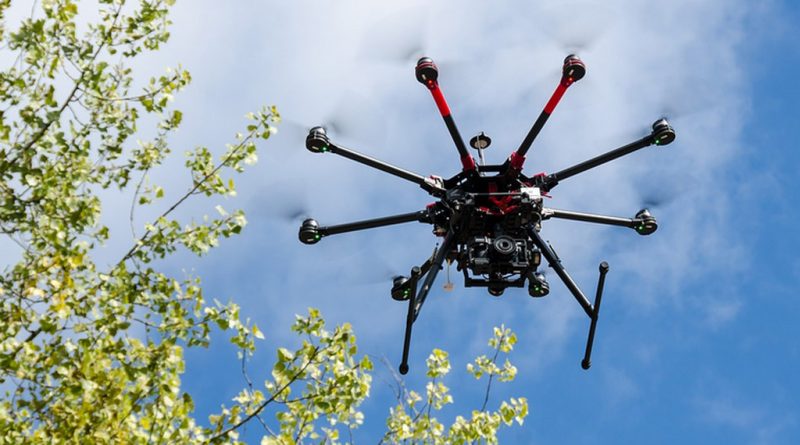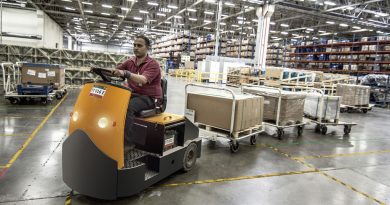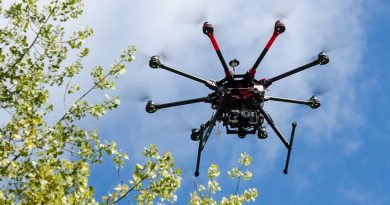Amazon and Uber are changing the logistics industry in Europe
The importance of the logistics industry for the whole economy cannot be overestimated. The global logistics industry is worth $8.1 trillion and is expected to double in value by 2023. The sector is now shaped by the largest and fastest growing players such as Amazon and Uber.
In the United States, the logistics sector accounts for 8% of the annual gross domestic product (compared to about 6% of GDP in Poland). The largest American company in the industry, XPO Logistics Inc., achieved a net revenue of $4 billion in 2017, prescout.com reports.
According to the U.S. Bureau of Labor Statistics, more than 5 million people work in the transport and logistics sector and truck drivers account for about 20% of all jobs in the industry.
The American industry, just like the European one, is currently experiencing a boom, but in order to keep up with the current growth, it needs to take specific measures. To meet market needs and increase efficiency while reducing costs and environmental impact, operators need to be innovative and open to major changes.
Not only companies with many years of experience in the industry, such as UPS or FedEx, are working on innovative solutions. Also new players in the industry – Amazon and Uber – are competing for part of the market.
Uber’s digital era of logistics
After creating an innovative passenger transport model, Uber applied the same concept to transport and developed new applications: UberRush and UberFreight. The applications allow for skipping forwarders, so the carriers can earn more.
UberFreight is a digital platform connecting carriers and shippers. It enables direct contact between the parties, providing greater flexibility, cost reduction and increased efficiency.
It was launched on the American market in 2017. The company claims that in the last quarter of 2018 it had 30,000 active users and the UberFreight application was downloaded more than 328,000 times. In March this year, UberFreight started its European expansion from the Netherlands. Over time, the company wants to expand its operations to other parts of Europe, although the details of investments in the Old Continent are not yet known.
UberRush, on the other hand, is an application designed for transport on the last mile. Users as freelancers can deliver shipments within cities. Currently, the solution is only available in New York, San Francisco and Chicago.
Why did Amazon engage in transport?
Amazon, in turn, began to take its first and major steps in logistics in order to achieve independence. This is evidenced by Amazon Flex, Seller Flex, or the Amazon Prime Air program. By taking over a large part of logistics processes, the e-commerce giant was able to reduce costs and become independent of its current logistics service providers.
Prescout.com states that the company wants to go one step further and offer transport services to other companies. In the coming weeks, the service will be launched in Los Angeles.
The company owned by Bezos will build a new hub and airport that will serve Amazon cargo airlines. The airline will not only make it possible to be independent of outsourcing transport to external carriers but will also bring considerable savings. According to the estimates presented at the end of last year by the analyst of the investment bank Morgan Stanley, the mere shifting of air transport to Amazon Air may give savings of up to $2 billion a year.
Innovation as the ultimate and main objective
In addition to implementing digital and innovative solutions, many industry leaders see automation as a long-term solution to increasing productivity. This is why well-known companies such as Uber and Amazon, as well as Google and Tesla, are involved in the development of autonomous vehicles. The company that will be able to launch unmanned trucks on the market will have a huge advantage. Not only will it save drivers’ labour costs, but also the lack of staff will not affect its efficiency.
To develop this technology, in 2016 Uber bought Otto, a manufacturer of autonomous trucks. For some time now, trucks without drivers have been delivering cargo in the US state of Arizona as part of testing. However, changes to the legislation are also necessary to fully implement such a solution.
Amazon, on the other hand, bets on drones. Jeff Bezos, Amazon’s CEO, presented the first prototype of a drone during a TV interview at the end of 2013. For several years now, Amazon has been offering the Prime Air service that delivers parcels weighing up to 2.3 kg within 30 minutes. Amazon’s first fully automated drone delivery to a customer took place in December 2016. A man from Cambridge who ordered a Fire TV Videostreaming Stick and a pack of popcorn received delivery just 13 minutes after the order was placed, announced Jeff Bezos on Twitter.
In addition, the e-commerce giant wants to patent intermodal transport using drones. In August 2017, the company filed an application with the U.S. Patent Office to that effect. According to it, ‘intermodal vehicles can be loaded with objects and a flying vehicle and directed to places where the demand for objects is known or predicted (e.g. based on the shopping history of the area)’. Drones will deliver shipments from trains, trucks, ships or other vehicles equipped with special systems enabling one or more shipments to be loaded on the drones and activating them. This system will also make it possible to receive a flying vehicle while driving.
Source: trans.info





